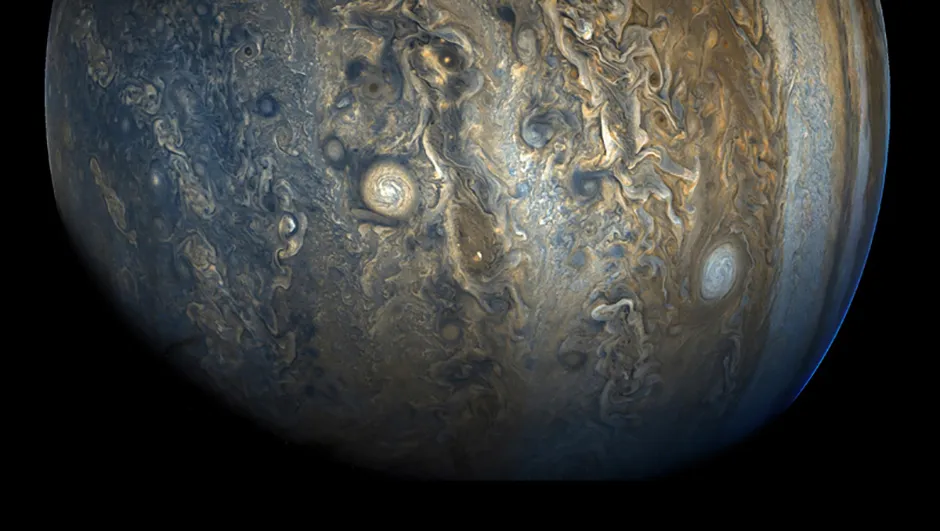Images showing the clearing of Jupiter's clouds during the last equatorial disturbance event in 2007. Top left shows Jupiter on 3 March 2007 via the Infrared Telescope Facility (IRTF) in Hawai'i, revealing the unusual cloud-clearing at the equator. Top right shows the planet on 3 January 2016 via the IRTF during an undisturbed period. Bottom left shows a colour image of Jupiter captured by Anthony Wesley (Australia) on 2 March 2007. Bottom right shows a colour image captured by Tiziano Olivetti (Thailand) from 2 January 2016.
UK scientists have been looking at data from observations of Jupiter to identify a pattern of meteorological events occurring at its equator.
Amateur and professional astronomers will both be aware of Jupiter’s striped appearance and how these stormy bands of clouds can change and shift over time.
Astronomers at the University of Leicester have been analysing a database of Jupiter observations spanning over 40 years to attempt to understand the forces causing these weather changes.
Jupiter’s equator is normally covered with thick clouds that make it look white through optical telescopes.
The team used infrared observations to observe events occurring at the gas giant's equator when the thick, white clouds appear to be missing.
“Every six or seven years, we found examples of observations when the equatorial clouds had vanished completely, allowing us to see deeper into Jupiter’s churning atmosphere,” says study lead author Dr Arrate Antuñano from the University of Leicester’s Department of Physics and Astronomy.
“These cloud-clearing disturbances left the equator looking very bright in the infrared, and dark brownish in visible light. These disturbances lasted for 12-18 months, and we saw spectacular examples in 1973, 1979, 1992, 1999 and 2006.”
Adopting this pattern, the researchers expected to see events in 1985 and 2013, but on these occasions the clouds didn’t clear completely.

“As usual, Jupiter is reluctant to give up all its secrets at once.
It seems that this six-seven-year pattern isn’t perfect, and sometimes we don’t see a complete cloud-clearing disturbance,” says Dr Glenn Orton of NASA’s Jet Propulsion Laboratory, one of the scientists who helped build the database of Jupiter observations used in the study.
“If we follow the pattern over the last 45 years, the really exciting result of this work is that we expect to see a new event very soon, perhaps as early as next year,” says Dr Antuñano.

